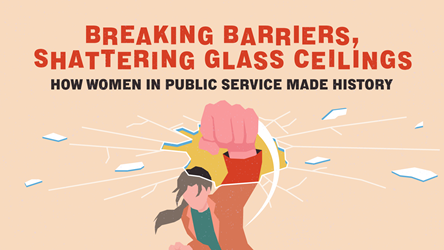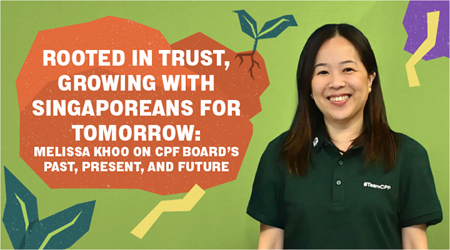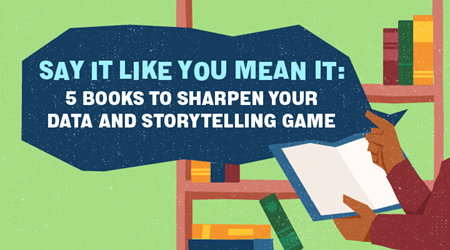Co-Creating to Help the Disabled
Scenario 1
Cassie* graduated with a master’s degree in counselling and was determined to find a job in the helping profession. Willing to do anything from project management to administrative support, she sent her résumé to 400-500 job listings. The number of positive responses she received? Zero. Cassie is visually impaired.
Scenario 2
Peter*, with an honours degree, was able to find a good job in graphic design but was unable to sustain it. Some days were productive; on others, the stress was unmanageable. Peter has bipolar disorder, a mental illness characterised by extreme mood swings.
*Names have been changed to protect identities.

Peter and Cassie are two persons with disabilities from mainstream schools who find themselves unable to find and keep jobs that match their qualifications. The National Council of Social Service (NCSS) wanted to better help people like them. The Council launched Project Liftoff, a joint initiative with the Ministry of Social and Family Development, to produce a range of solutions.
A tall order
The mandate was steep: Don’t hand the persons with disabilities and employers a programme. Don’t even try to improve existing services; NCSS knew more than that was needed. Instead, look closely at the individuals and organisations involved. Figure out what they need. Involve them in the design and development process from the beginning.
“First,” said Ms Eunice Lin, NCSS, who headed Project Liftoff, “we asked the critical questions: How big was this unique category of individuals with disabilities and what were their profiles? On the employer side, what were typical assumptions – and barriers – around hiring these persons?”
In seeking answers, Project Liftoff partnered with The Human Experience Lab at the Public Service Division to use design thinking for the first time, a research method that focuses on who you are designing for (read The (He)art of Designing Policies in July/August 2013). In other words, the Project Liftoff team stepped into its customer’s shoes. Over four months, the team attended workshops and practice sessions on ethnographic research skills. They spoke with other stakeholders and experts, and conducted extensive interviews with 12 persons with varied disabilities, asking questions that ranged from the person’s particular skills to how they navigated the trains in the morning rush. And then the seven-member team took it a step further. They walked beside these people at different times in the day as they left the house, travelled to work or job trials, and even as they found lunch.
To the team’s surprise, they discovered that the individuals didn’t need assistance meeting the practical challenges, like transport. They were determined to manage on their own. What they sought, rather, was help finding employment situations in which their talents and skills were recognised and their particular disabilities reasonably accommodated. “It was a shift in our thinking,” said Ms Lin. “We found that the persons with disabilities [who have studied in mainstream schools] didn’t want to be taken care of. They wanted support that would allow them to take care of themselves.”
From their findings, the team derived three main insights. The first was that disabled individuals from mainstream schools want to actively participate in their employment search. They’re not just there along for the ride, they want to help drive. For example, Job Placement Officers typically meet potential employers first without the job seeker to assess if the person with disability could cope with the job requirements or if the office was accessible for the person. But one visually impaired job seeker insisted on attending because he wanted to ensure that his abilities, not his disabilities, stood out. He also wanted to speak up for himself on how he would work to meet the job requirements.
A second insight is that the work readiness of a disabled person is best fostered by work itself. Case in point: while a young graduate with a disability may not have all the confidence to deliver at work, he is much better off in a supportive work environment where he is pushed to go further, than staying at home or doing a job far below his qualifications.
Employer flexibility is also critical. Disabled persons often find open employment challenging. Their health conditions change and their work arrangements need to change too. There are days when they need to telecommute and that would require their colleagues’ understanding.
Lifting off
With these insights, the Project Liftoff team prototyped four programmes and invited persons with disabilities, potential employers and other stakeholders, like hospitals and schools, to review them. “With our customers’ response,” said Ms Lin, “we threw out three of our proposed programmes. They did not meet the demands.” The team went back to the drawing board and came up with two new ideas that passed muster.
Those ideas, and one from the original four, are called Launchpad, Linkworks and Lenscape. Launchpad matches individuals with employers and offers both parties on-going training and support. NCSS will share the idea with SG Enable (see sidebox below) to see if they can work together to realise the idea. Linkworks seeks to create distribution channels for products and services offered by disabled persons working in social enterprises. And Lenscape, where Ms Lin and her team will apply most of their focus in the near term, builds awareness of this sector of persons with disabilities through community events and education.
Ms Lin said the Council plans to apply design thinking to its other projects. “We’re moving away from designing programmes and services for people to design with people. Really, it’s about trying to build a more inclusive society.”

SG Enable
Established in July last year, it aims to support the needs of persons with disabilities. The agency’s various functions include improving employability and employment options for them, and working with stakeholders to better support them. www.sgenable.sg
- POSTED ON
Jan 22, 2014
- TEXT BY
Kate Lilienthal
- ILLUSTRATION BY
Ng Shi Wei









